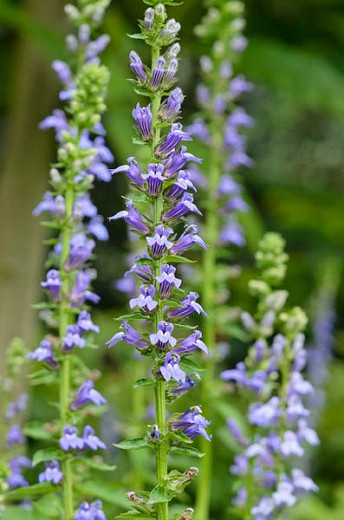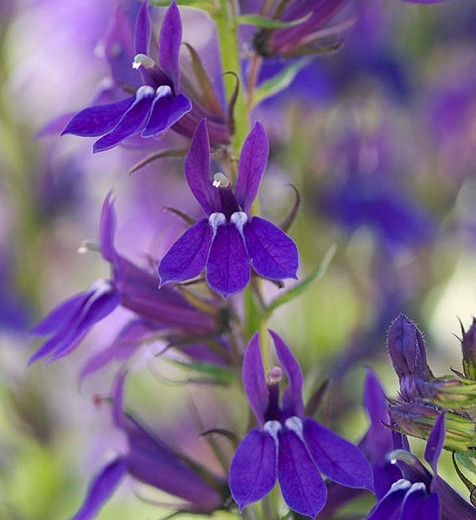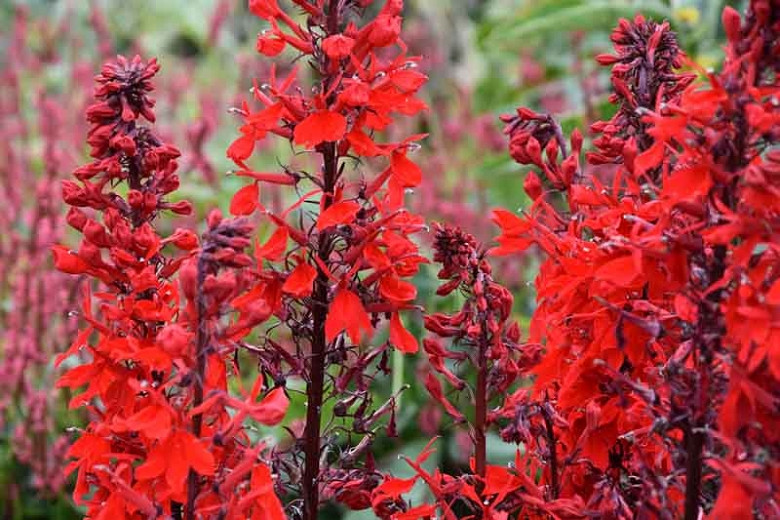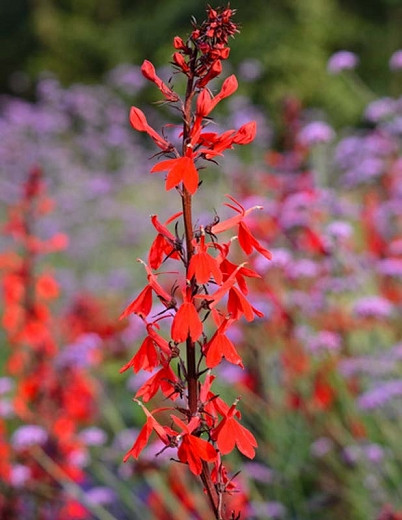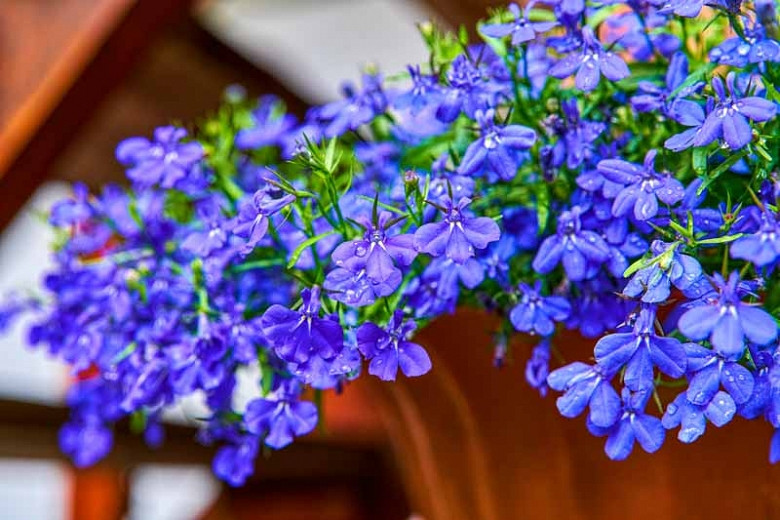Lobelia siphilitica (Great Blue Lobelia)
A North American native that is perfect for the late summer garden, Lobelia siphilitica (Great Blue Lobelia) is a popular, upright perennial which produces long-lasting spikes of bright blue flowers atop a finely-toothed, lance-shaped foliage from late summer to mid-fall. Quite an architectural plant that adds vertical interest to the landscape.
A North American native that is perfect for the late summer garden, Lobelia siphilitica (Great Blue Lobelia) is a popular, upright perennial which produces long-lasting spikes of bright blue flowers atop a finely-toothed, lance-shaped foliage from late summer to mid-fall. Quite an architectural plant that adds vertical interest to the landscape. The nectar and pollen of the flowers attract primarily hummingbirds, bumblebees, and other long-tongued bees. Extremely hardy, low care, and fairly pest and disease-free, Great Blue Lobelia tends to be short-lived, although it may self-seed in ideal growing conditions (without becoming invasive).
- Generally growing 2-3 ft. tall (60-90 cm) and spreading 12-18 in. (30-45 cm), this clump-forming Lobelia thrives in rich, humusy, medium to wet soils in full sun to part shade. Appreciates some shade from the hot afternoon sun and loves a lot of moisture. Keep soil moist during summer dry spells. Can be grown in water to 3 in. deep (7 cm).
- A welcomed addition to beds, borders, wild gardens, woodland gardens, cottage gardens, and near ponds or streams.
- A magnet for hummingbirds, butterflies, and beneficial insects, it is deer and rabbit resistant!
- Deadhead for a neat appearance, encourage rebloom or prevent any undesired reseeding. Pinch back for bushier and more compact plants. Do not cut back in fall, mulch lightly. Divide clumps in spring if needed.
- Ingestion may cause discomfort.
- Toxic to dogs, toxic to cats, toxic to horses.
Requirements
| Hardiness | 4 – 9 |
|---|---|
| Heat Zones | 1 – 8 |
| Climate Zones | 1, 2, 3, 4, 5, 6, 7, 8, 9, 14, 15, 16, 17 |
| Plant Type | Perennials |
| Plant Family | Lobelia |
| Exposure | Full Sun, Partial Sun |
| Season of Interest | Summer (Late)Fall |
| Height | 2' – 3' (60cm – 90cm) |
| Spread | 1' – 2' (30cm – 60cm) |
| Spacing | 12″ – 18″ (30cm – 45cm) |
| Water Needs | High |
| Maintenance | Low |
| Soil Type | Chalk, Clay, Loam, Sand |
| Soil pH | Alkaline, Neutral |
| Soil Drainage | Moist but Well-Drained, Moisture Retentive |
| Characteristics | Showy |
| Native Plants | United States, Midwest, Illinois, Indiana, Iowa, Kansas, Michigan, Minnesota, Missouri, Nebraska, North Dakota, Ohio, South Dakota, Wisconsin, Northeast, Connecticut, Delaware, Maine, Massachusetts, Maryland, New Hampshire, New Jersey, New York, Pennsylvania, Vermont, Rocky Mountains, Colorado, Wyoming, Southeast, Alabama, Arkansas, Georgia, Kentucky, Louisiana, Mississippi, North Carolina, South Carolina, Tennessee, Virginia, West Virginia, Southwest, Oklahoma, Texas |
| Tolerance | Deer, Wet Soil |
| Attracts | Bees, Birds, Butterflies, Hummingbirds |
| Garden Uses | Beds and Borders, Bog Gardens, Ponds and Streams, Rain Gardens, Water Gardens |
| Garden Styles | City and Courtyard, Coastal Garden, Informal and Cottage, Prairie and Meadow |
